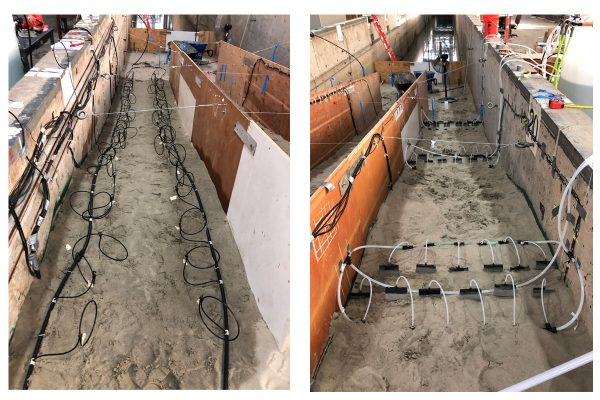Dr. Brina Montoya says a unique program offered by the National Science Foundation is providing a once-in-a-lifetime opportunity for her and her students to test a full-scale dune in a controlled environment to assess the performance of bio-cementation under simulated hurricane wave loading. Bio-cementation is a method to strengthen sands using natural microbial processes in the soil. The results of the large-scale experimental work will inform numerical simulations that will be used to optimize and design bio-cementation implementation for coastal sand dunes.
Pegah Ghasemi and Qianwen Liu pictured above are CCEE graduate students working in Montoya’s research group. Currently they are visiting scholars at Oregon State University for a couple of months because the O.H. Hinsdale Wave Research Laboratory is part of NSF’s Natural Hazards Engineering Research Infrastructure (NHERI) Experimental Facilities. NHERI provides a network of shared, state-of-the-art research facilities and tools located at universities around the country, and funded NSF grants allow researchers from any school to use the unique facilities for hazard related research.
Montoya is collaborating with Dr. Matt Evans at OSU who is Co-Principal Investigator on the NSF funded project. Other collaborators, also at OSU include Drs. Meagan Wengrove, Dan Cox, and Pedro Lomónaco.


